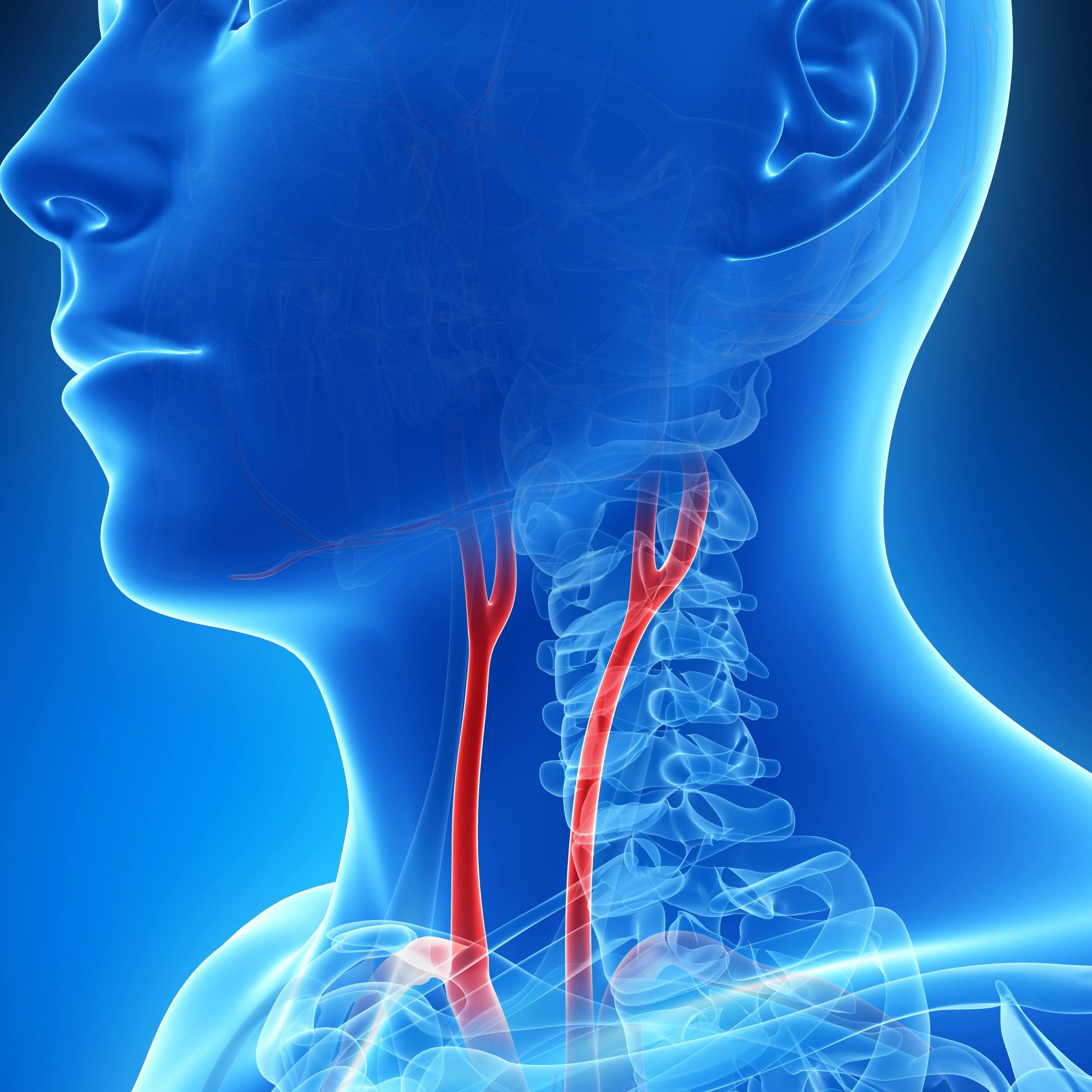-
Science Saturday: An anti-cancer idea goes viral
Many viruses are drawn to cancer like iron filings to a magnet. Why not put these viruses to use — finding, infecting and killing cancer cells?
“It’s an extremely appealing concept,” says Mayo Clinic hematologist Stephen Russell, M.D., Ph.D. Dr. Russell heard the siren call of “oncolytic virotherapy” — fighting cancer with viruses — early in his medical career. He has pursued a “one-shot cancer cure” at Mayo Clinic, where he started the Department of Molecular Medicine, built an oncolytic virotherapy program and developed the manufacture of oncolytic viruses.
“I decided this is what I’m going to do. There wasn’t ever and there still isn’t any doubt,” he says. “I know it’s hard and I know there are always, always, always barriers coming at you. But that I love. Life is a problem-solving exercise. I feel extremely fortunate to have this overarching goal that drives me.”
And in this case, it drove all the way to a potential treatment for multiple types of cancer.

Long Journey from Idea to Application
United Kingdom, 1980: Dr. Russell was a third-year medical student at the University of Edinburgh. He had just aced his microbiology final and learned he was one of four students among 150 picked for a final distinction oral exam. The next morning he received a phone call from his mother that his 27-year-old sister and her husband had died in a house fire. He took the long train ride back to his home in Portsmouth.
“It was the first time I had encountered the death of someone close to me,” he says. “I couldn’t bear to think about what had happened.” So, he immersed himself in the subject at hand — microbiology, bacteria and viruses. “I was just saturating myself with viruses to escape from having to think about this awful thing.” In his obsessive reading he realized the trait of viruses to propagate in specialized tissues might provide a way to cure cancer. It was just the start of a long journey. “I did early in my career, I think, suffer as a consequence of wanting to do this,” he says. Despite good grades and honors, when he applied for residencies, he was shot down in one interview after another.
“I spoke to Janey, my wife, and said, ‘I don’t know what’s happening. I’m getting thrown out of the interviews after ten minutes or so.”’ They all began friendly enough, until interviewers asked what he wanted to do with his career. “I tell them I want to cure cancer with viruses. After that, it sort of gets less friendly.”
“She said, ‘Steve, the first lesson about interviews is that you have to show an interest in the job that you’ve actually applied to do.’’
“It was such good advice because the immediate next job I went for I got,” he says. Dr. Russell eventually moved to the University of Cambridge, working for biochemist Greg Winter, winner of the 2018 Nobel Prize in Chemistry. One day he took a call from Mayo Clinic: They needed a director to start a new molecular medicine program, build a new laboratory and fill seven faculty positions.

“I was on the phone thinking, ‘They’ve got the wrong person. This is some kind of embarrassing mistake,”’ says Dr. Russell. He asked for a couple of days to think. “So I rushed off and talked to my boss. He said, ‘Look, this kind of thing happens once in your lifetime. I would love to keep you here, but honestly, we could never match this kind of opportunity. And if you really want to cure cancer with viruses, I don’t see how you can turn it down.’”
Learning to build a Trojan horse
Scientists had long observed that a viral infection such as measles sometimes shrinks tumors and, in the 1950s had started testing the idea that they could be used as a cancer therapy. But early research was unfocused and unsuccessful. As chemotherapy and radiation showed promise and prolonged lives, interest in virotherapy waned. But by the time Dr. Russell arrived at Mayo in 1998, scientists had learned more about viruses and how to edit their genome.
Viruses have the potential to deliver a one-two punch to cancer. Why they seek out and propagate in cancer cells is a bit of a mystery, though they may favor those tissues because cancer manipulates various molecules to evade or turn off the body’s immune system.

Once inside tumors, viruses propagate their own genetic material, eventually causing cancer cells to explode and release thousands of new viruses. This process, called “lysis,” shrinks tumors directly. But viruses also have an indirect effect. By bursting cancer cells, the viruses release signature molecules “in a way that makes tumors really attractive to the immune system,” says Dr. Russell. “We call it inflammatory killing.”
That’s oncolytic virotherapy in theory. In practice, there are many hurdles. For one, an ideal virus must focus exclusively on the cancer. “If you’ve got a virus that can do a heck of a lot of damage, then just a little bit of off-target toxicity would be completely unacceptable,” says Dr. Russell.
A second challenge is “arming” a virus to be more lethal to cancer. “What are you going to put into the virus to make it do its job better?” asks Dr. Russell. The virus has limited time to fight cancer before a healthy immune system shuts it down. By then, an ideal virus will have killed cells and stimulated the immune system to fight the cancer.
Finally, the virus has to be safe — lethal to cancer but not to patients.
At Mayo, Dr. Russell and colleagues identified natural viruses with the potential to be good cancer-fighters and then engineered them to become even more targeted and potent. They focused much of their effort on two—measles and vesicular stomatitis virus (VSV), a livestock pathogen found in the southern U.S., Mexico and Central America.
VSV is appealing because it’s well-known to science, easy to grow, easy to modify and easy to manufacture. It infects and kills tumor cells efficiently. Because few people have developed immunity to VSV, it can be injected through a vein and reach cancer before the body reacts and wipes it out.
Measles is a different case. Most adults have been exposed to measles or vaccinated against it. So to reach the cancer, it must be injected directly into the tumor or cloaked in a different kind of cell — a “Trojan horse” — so it can sneak past the body’s immune defenses.

Single Shot for Cancer
As work progressed, Dr. Russell began to talk about the goal of a single-shot cancer treatment. In mouse models, “we frequently see that a single dose of virus is sufficient to melt a large tumor,” he says. “It’s a dream scenario.” Yet that was in mice. Viruses hadn’t worked well in humans until 49-year-old Stacy Erholtz underwent an experimental trial at Mayo Clinic in June 2014.

“She was in a bad way,” says Dr. Russell. “She had had myeloma for 10 years. She’d had all the available drugs, and her myeloma had become resistant to them. She had had two stem cell transplants, and the disease was coming back fast. She had this tumor on her forehead. It was an egg-sized lump, and it was destroying the underlying bone and compressing her brain. And she had four other such tumors and diffuse myeloma infiltrating her bone marrow.”
Dr. Russell injected her with a dose of cultured and engineered measles virus equivalent to 10 million times the amount given in a routine vaccination. “It was a manufacturing feat that really took a lot of effort at Mayo to generate sufficient virus for that,” he says.
Erholtz went through a night of shaking, spiking temperature and vomiting in reaction to the virus injection. But by day three, her egg-sized tumor began to shrink and soon disappeared. After six weeks, her bone marrow was cancer-free.
At nine months, the tumor on her forehead started to come back. There was no evidence of myeloma elsewhere, so doctors irradiated it. Two-and-a-half years later, another small lump appeared and was blasted with radiation.
Now, five years later, Erholtz is free of cancer.
Unfortunately, other patients didn’t fare as well. A second patient, treated at about the same time with tumors in her leg muscles, did not go into sustained remission. A patient with colorectal cancer, treated at Mayo Clinic in Arizona, died because virus destroyed the massive tumor so rapidly.
“We’ve studied Stacy extensively,” says Dr. Russell. After her second bone marrow transplant she had few or no measles antibodies, so the virus had a clear path to the tumor. Yet the antimeasles response of her T-cells was strong and helped to annihilate the cancer.
“Trying to understand what happened with Stacy is part of the key to how to get to this single-shot cure,” says Dr. Russell. “Stacy was the first case where a single intravenous dose of the virus brought the disease completely under control and has led to such a great clinical outcome.”
Those findings led to other types of studies, patents and companies.
Going Commercial
Mayo Clinic worked out well for Dr. Russell. “I could not have wished for a better environment in which to design, build, test and obtain clinical validation for viruses as a new approach to cancer therapy,” he says.
Colleagues Richard Vile, Ph.D. and Roberto Cattaneo, Ph.D. joined him from Europe.
A manufacturing facility for the generation of clinical grade viruses was developed by Mark Federspiel, Ph.D.
A pharmacology/toxicology group was developed by Kah Whye Peng, Ph.D., to address the rigorous data requirements of the Food and Drug Administration.
Translational researchers Evanthia Galanis, M.D., and Angela Dispenzieri, M.D., led the original first-in-human clinical trials and have since been joined by many others.
And behind it all was a well-integrated, highly-skilled team creating and testing new virus designs, developing manufacturing methods, conducting FDA-mandated preclinical studies, analyzing samples from virus-treated patients, managing clinical trial logistics, developing pharmacy protocols for virus handling, and providing specialized nursing care to virus-treated patients.
Along with Dr. Peng (once his student at Cambridge), and former Mayo graduate student Shruthi Naik, Ph.D., Dr. Russell spun off two companies. Vyriad (“myriad viruses,” coined by Dr. Russell’s wife) develops oncolytic viruses. Imanis Life Sciences provides laboratory services.

A new laboratory and manufacturing facility in Rochester, Minnesota can produce 50 times the amount of virus possible at Mayo. Viral products first developed at Mayo and now engineered by Dr. Russell’s companies include:
- MV-NIS, a measles virus engineered to incorporate the so-called sodium iodide symporter gene (NIS for short). “This is like a gene snitch you can put into the virus that allows you to see where it’s going,” says Dr. Russell.
- Voyager-V1, a VSV virusengineered for greater cancer specificity and potency, and with the NIS tracker.
Vyriad is conducting several clinical trials, some in partnership with Mayo and others. It is testing its measles virus on breast cancer, brain tumors in children and bladder cancer, and its Voyager-V1 on solid tumors as well as blood cancers in combination with immunotherapy that unleashes the immune system and creates “synergistic anti-tumor activity,” says Dr. Russell.
Vyriad’s biggest challenge now and for the next few years will be funding the battery of clinical trials needed to win Food and Drug Administration approval. But still, Dr. Russell says he feels he is closing in on a career-long dream.
“We want viruses to be useful and we want them to help patients. So we want to work out how to best use them to improve the quality of life, shrink tumors, prolong survival in patients with cancer and get there as fast as we possibly can.”
-Greg Breining, June 2019
Related Articles







